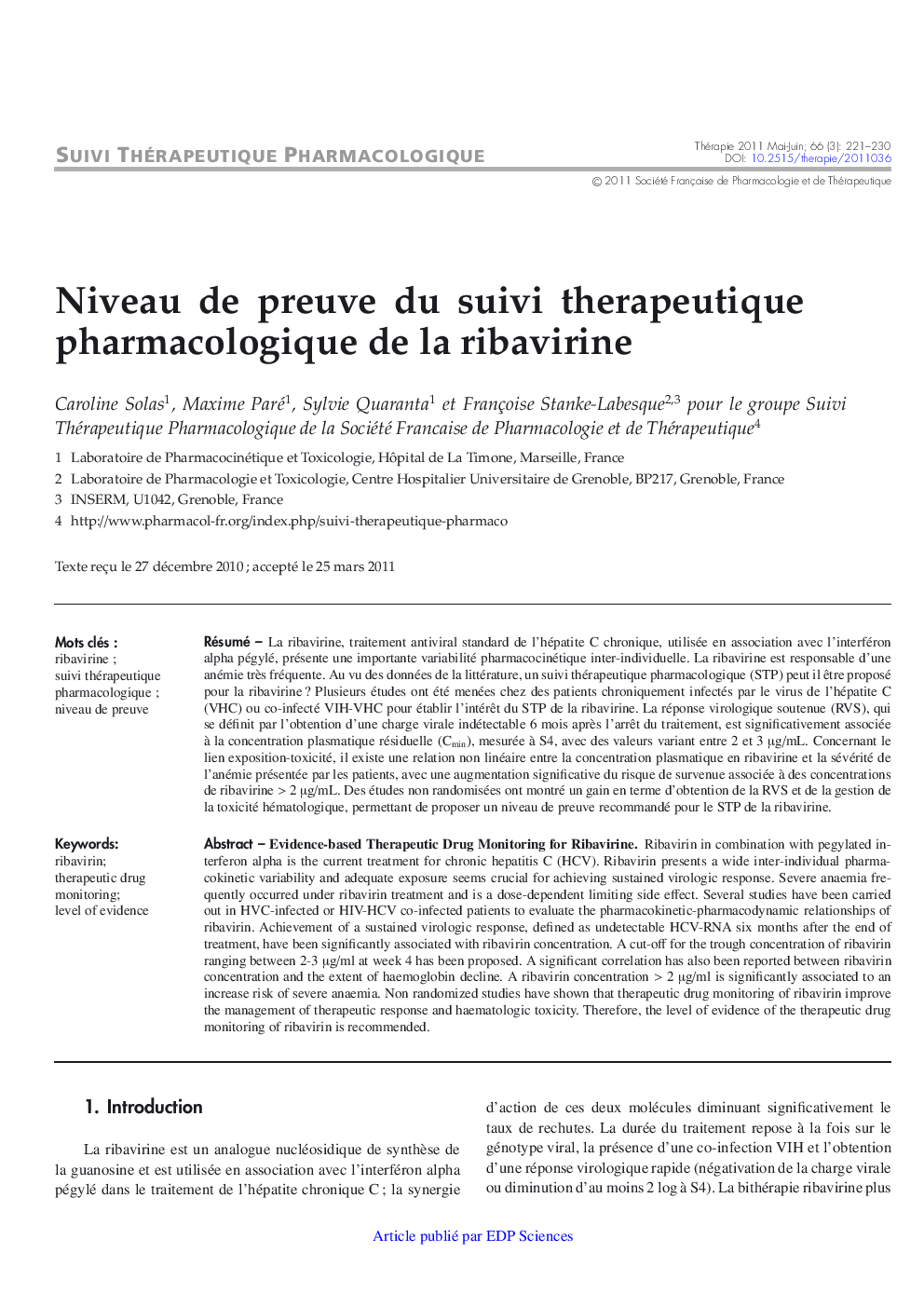| Article ID | Journal | Published Year | Pages | File Type |
|---|---|---|---|---|
| 2579141 | Thérapie | 2011 | 10 Pages |
Abstract
Ribavirin in combination with pegylated interferon alpha is the current treatment for chronic hepatitis C (HCV). Ribavirin presents a wide inter-individual pharmacokinetic variability and adequate exposure seems crucial for achieving sustained virologic response. Severe anaemia frequently occurred under ribavirin treatment and is a dose-dependent limiting side effect. Several studies have been carried out in HVC-infected or HIV-HCV co-infected patients to evaluate the pharmacokinetic-pharmacodynamic relationships of ribavirin. Achievement of a sustained virologic response, defined as undetectable HCV-RNA six months after the end of treatment, have been significantly associated with ribavirin concentration. A cut-off for the trough concentration of ribavirin ranging between 2-3 μg/ml at week 4 has been proposed. A significant correlation has also been reported between ribavirin concentration and the extent of haemoglobin decline. A ribavirin concentration > 2 μg/ml is significantly associated to an increase risk of severe anaemia. Non randomized studies have shown that therapeutic drug monitoring of ribavirin improve the management of therapeutic response and haematologic toxicity. Therefore, the level of evidence of the therapeutic drug monitoring of ribavirin is recommended.
Keywords
Related Topics
Health Sciences
Pharmacology, Toxicology and Pharmaceutical Science
Pharmacology, Toxicology and Pharmaceutics (General)
Authors
Caroline Solas, Maxime Paré, Sylvie Quaranta, Françoise Stanke-Labesque,
